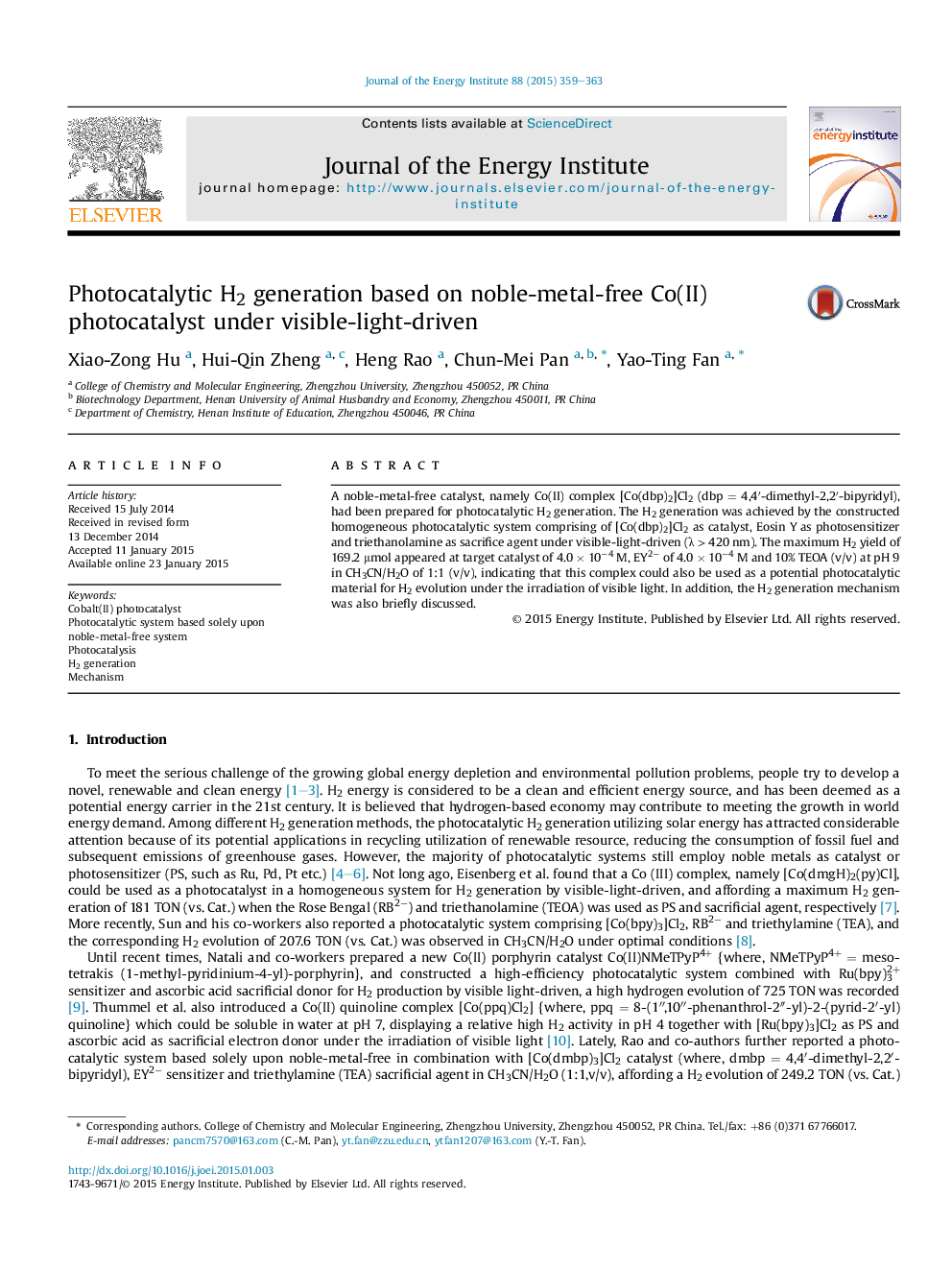| Article ID | Journal | Published Year | Pages | File Type |
|---|---|---|---|---|
| 1747607 | Journal of the Energy Institute | 2015 | 5 Pages |
•A homogeneous photocatalytic system based solely upon noble-metal-free was reported.•Max H2 yield for [Co(dbp)2]Cl2 complex was 169.2 μmol (vs.Cat.) in optimal condition.•Sacrifice agent, pH value and ratio of CH3CN to H2O critically affected H2 evolution.•Inactivity of system was mainly due to photodegradation from EY2− and catalyst.•Target complex could be used as a potential catalyst for photocatalytic H2 evolution.
A noble-metal-free catalyst, namely Co(II) complex [Co(dbp)2]Cl2 (dbp = 4,4′-dimethyl-2,2′-bipyridyl), had been prepared for photocatalytic H2 generation. The H2 generation was achieved by the constructed homogeneous photocatalytic system comprising of [Co(dbp)2]Cl2 as catalyst, Eosin Y as photosensitizer and triethanolamine as sacrifice agent under visible-light-driven (λ > 420 nm). The maximum H2 yield of 169.2 μmol appeared at target catalyst of 4.0 × 10−4 M, EY2− of 4.0 × 10−4 M and 10% TEOA (v/v) at pH 9 in CH3CN/H2O of 1:1 (v/v), indicating that this complex could also be used as a potential photocatalytic material for H2 evolution under the irradiation of visible light. In addition, the H2 generation mechanism was also briefly discussed.
